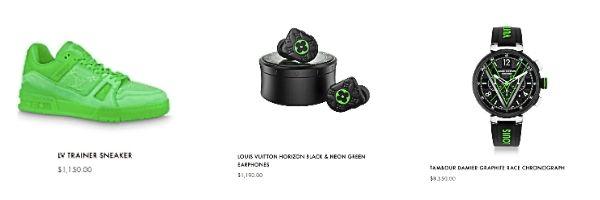
Have you ever thought about taking Psych 101 just to be better in sales? I have. There’s so much psychology that goes into it! Seriously, so much. And I’m not even talking about the actual selling part. Sometimes, it starts with price positioning.
Knowing how to price products and services is one of the most challenging aspects of being an entrepreneur.
Do you go with a “value offer” so that they believe they’re getting a deal? Or do you price it as a premium or luxury product, letting your clients know that they’re buying something special?
If you’re not sure what I’m talking about, let me break it down.
Price Positioning for Value
A value offer is about making it seem like there is so much value in something at an incredibly low price. The price compared to the value is so low that they would be crazy not to buy it. You can achieve this in several ways.
Showing the “Original Price”

One of them is to show the inflated “original” price. You’ll be offered a great deal on something for “only $19.97.” And next to it, with a big, bold, red X over it, an original price of $49.99.
With over $30 off, how could you pass that up?
Bonuses
Who can resist a cheap upsell to get a bunch of bonuses?“ Not only do you get (this), you’ll also receive (this), (this), and (this) for FREE!” Usually, these freebies are pretty low quality or value, but they were free, so how can you complain?
Urgency

Another option is to give them a deadline to buy it so cheaply that they’d be foolish to miss the opportunity. (In case you didn’t already know, many of those timers mean nothing because they’re always there.)
When the clock is ticking, you’re less likely to spend time thinking about whether or not it’s actually a good deal.
And just so we’re clear, none of these strategies are proof of a bad product. Far from it! They’re just designed to sell quicker and easier. It doesn’t mean they’re not worth it or that you shouldn’t use them when deciding how to price products.
Dollars and Cents
Finally, there’s the price itself. Weirdly enough, prices that end in 9, 7, or 5, in dollars or cents, seem way cheaper to many people.
If they see something for $497, their brain says, “That’s not even $500!”
And believe it or not, an item marked down for clearance at $2.99 will often sell quicker than a “regularly priced” item at $2.00. Unless it’s on the dollar menu or at the dollar store, then we buy way more than we need.
Crazy, I know. But we all fall for it. That’s why this type of positioning is used so often in the price points for retailers everywhere.
On the other side of that coin, you’ll see brands who use none of these tactics, but it’s still a tactic.
Price Positioning for Luxury
Take a look at these luxury items from Louis Vuitton.

I won’t make you squint. The prices are:
- $1,150.00
- $1,190.00
- $8,350.00
—For green sneakers, earbuds, and an admittedly cool watch—
What do you notice about those prices? Zeroes.
Zeroes make a difference
Not only do they not end in “value offer” numbers like 9 or 7, but they even include the zero cents. And we all learned in grade school that you don’t have to do that.
But there’s a reason. Those zeroes are a sign of luxury: more zeroes = more dollars. And you’ll spend it because these are the kinds of things you buy when you know you deserve them.
Other high-end sites remove the cents, but they still almost all end in zero. It’s the same thing, just a little cleaner. Even odder but just as effective, some brands will completely remove the dollar sign from the price.
These slight differences all lead to the idea that you’re not just ‘spending money,’ you’re investing in yourself.
Wording
In addition to the numbers, they’ll use words like exclusive, limited, and things like that. Those are usually accurate in terms of only being able to buy a particular style or offering for a certain amount of time. However, it still puts pressure on the buyer to break out their wallet quicker—it’s the same thing as value pricing without the famous countdown clock.
These brands want to sell you something, but they know they can’t and won’t sell to everybody. That’s why they don’t need to make these look inexpensive because their customers are special.
They don’t want you to think you’re getting a deal and that anybody can get it.
You’re buying a name, quality, prestige, and luxury—that doesn’t come cheap. They know that between the name and the high ticket cost, you’ll be happy buying it because you get to show your friends, family, and coworkers the kind of life you’re living through your possessions.
Again, rationally, you might know that you don’t have to spend that much money to buy quality stuff. You can get amazing-sounding earbuds for way less than $1200. But they won’t have that exclusive ‘LV’ on them.
Some people will eagerly pay any cost for their products. The feeling of being “worth it” will make spending that kind of money a good decision for those that can do it. That’s why luxury brands use this price positioning.
So knowing that, how do you feel about your pricing?
Here’s the thing, there’s nothing wrong with either one. But you could be doing yourself a disservice if your prices are too low because you hope you’ll sell more.
It helps to think of positioning as being less about the price and more about you.
Your Positioning Helps You Find the Right Price
The way you position yourself and your products and services should have a direct effect on how you price them, especially if you’re able to frame that position to your prospects.
It starts with getting them to admit that they have a need. If you can uncover their pains and needs well enough, you’ll hopefully be able to redirect their thought processes from “this could be better” to “this needs to change now.”
(Hint: Build open-ended questions into your sales process to get them there quicker and more honestly!)
In some sales roles or with some products, getting prospects to that point might take too long or be unnecessary, especially with “turn and burn” style products or services. If so, that’s when value price positioning comes in.
When you’re a “nice to have” instead of a “need to have,” you’re pricing needs to reflect that. It shows that you have value without breaking the bank, or the value is significantly greater than what the cost would be somewhere else or at a different time.
If that’s not the kind of sales you’re in or want to do, and you don’t have a name as well-known as Gucci, Tiffany’s, or Louis Vuitton (because, let’s face it, most of us don’t), you’ll have to work a lot harder to justify luxury pricing.
But that doesn’t mean that you shouldn’t go for it!
What is Your value?
You just have to position yourself in a way that shows you’re worth it. And you have to get them to admit they need you.
This is part of the qualifying process anyway, and it’s always important. But the higher your prices are compared to your competitors, the deeper you’ll have to go with it.
And just like Louis Vuitton, you’ll have to understand that you’re not going to be able to sell yourself to everybody.
This kind of positioning isn’t just important in sales; it’s crucial in any partnership.
On my personal blog, I wrote about almost entering into a partnership where I would’ve been viewed more as a vendor than a partner. Because the CEO didn’t think he needed my partners and me, he wasn’t motivated to pay us what we were worth. More importantly, he didn’t value our time or our ideas and processes.
To him, we were a “nice to have.” That’s not a great place to be.

In any partnership, from a new project to a sales transaction to a marriage, admitting that there is a need is huge. If you don’t think you need the other person, there will be less investment in time, money, resources, or just making it work.
But in the sales process, it’s crucial to decide your price positioning. Or perhaps, more importantly, your positioning.
Whether you go with value, luxury, or somewhere in between, it just has to make sense for you, your selling style, and your selling and conversational abilities.
If you’re struggling to have those conversations or don’t know what questions to ask to help your prospects find their pains and needs, click here to find out how I can help.

